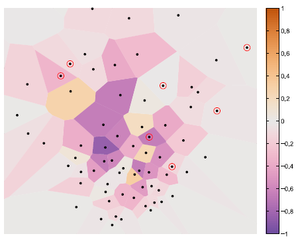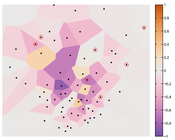Information
- Publication Type: Journal Paper with Conference Talk
- Workgroup(s)/Project(s):
- Date: November 2016
- Journal: Computers & Graphics (Special Section on SIBGRAPI 2016)
- Volume: 60
- Lecturer: Joaquim Jorge
- ISSN: doi: 10.1016/j.cag.2016.08.008
- Pages: 93 – 106
Abstract
The analysis of multidimensional data has been a topic of continuous research for many years.This type of data can be found inseveral different areas ofscience. The analysis of multidimensional data has been a topic of continuous research for many years. This type of data can be found in several different areas of science. A common task while analyzing such data is to investigate patterns by interacting with spatializations of the data in a visual domain. Understanding the relation between the underlying dataset characteristics and the technique used to provide its visual representation is of fundamental importance since it can provide a better intuition on what to expect from the spatialization. In this paper, we propose the usage of concepts from non-parametric statistics, namely depth functions, as a quality measure for spatializations. We evaluate the action of multi-dimensional projection techniques on such estimates. We apply both qualitative and quantitative ana-lyses on four different multidimensional techniques selected according to the properties they aim to preserve. We evaluate them with datasets of different characteristics: synthetic, real world, high dimensional; and contaminated with outliers. As a straightforward application, we propose to use depth information to guide multidimensional projection techniques which rely on interaction through control point selection and positioning. Even for techniques which do not intend to preserve any centrality measure, interesting results can be achieved by separating regions possibly contaminated with outliers.Additional Files and Images
Weblinks
No further information available.BibTeX
@article{Groeller_2016_P7,
title = "Depth functions as a quality measure and for steering
multidimensional projections",
author = "Douglas Cedrim and Viktor Vad and Afonso Paiva and Eduard
Gr\"{o}ller and Luis Gustavo Nonato and Antonio Castelo",
year = "2016",
abstract = "The analysis of multidimensional data has been a topic of
continuous research for many years.This type of data can be
found inseveral different areas ofscience. The analysis of
multidimensional data has been a topic of continuous
research for many years. This type of data can be found in
several different areas of science. A common task while
analyzing such data is to investigate patterns by
interacting with spatializations of the data in a visual
domain. Understanding the relation between the underlying
dataset characteristics and the technique used to provide
its visual representation is of fundamental importance since
it can provide a better intuition on what to expect from the
spatialization. In this paper, we propose the usage of
concepts from non-parametric statistics, namely depth
functions, as a quality measure for spatializations. We
evaluate the action of multi-dimensional projection
techniques on such estimates. We apply both qualitative and
quantitative ana-lyses on four different multidimensional
techniques selected according to the properties they aim to
preserve. We evaluate them with datasets of different
characteristics: synthetic, real world, high dimensional;
and contaminated with outliers. As a straightforward
application, we propose to use depth information to guide
multidimensional projection techniques which rely on
interaction through control point selection and positioning.
Even for techniques which do not intend to preserve any
centrality measure, interesting results can be achieved by
separating regions possibly contaminated with outliers. ",
month = nov,
journal = "Computers & Graphics (Special Section on SIBGRAPI 2016)",
volume = "60",
issn = "doi: 10.1016/j.cag.2016.08.008",
pages = "93--106",
URL = "https://www.cg.tuwien.ac.at/research/publications/2016/Groeller_2016_P7/",
}


 image
image Paper
Paper
